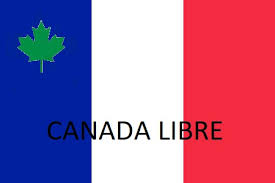HOW TO PROTECT ARMENIANS IN THE SOUTH CAUCASUS
The
article below present what, essentially, is the Iranian point of view on the
South Caucasus crisis. It shows the divergence of views between Iran and Russia
on the matter, Iran being a de facto ally of the Armenians, and Russia guarding
the peace since the last war between Armenia and Azerbaijan and being also the
custodian power in that vast region since the dissolution of the Soviet Union
in the early 90s. It is undeniable that Iran and Russia, both Shanghai
Cooperation Organization members, must better coordinate their views and
actions on the matter.
That
being said, the deux major wars and many smaller skirmishes since the
disappearance of the Soviet Union are proof of the constant tensions between
the region's Armenians and Azerbaijanis. Even without mentioning the Armenian
genocide at the hands of the Turks at the end of the First World War, or the
pogroms that took place in many Azerbaijani cities after the fall of the Soviet
Union, the relationship between Armenians and Turkish-speaking populations in
the area are not good. The situation is so difficult, in fact, that the very
viability of an Armenian presence in what's left of the republic of Artsakh
(also known as Nagorno-Karabakh, a Turkish name that goes back to Soviet times)
may be seen as dubious, hanging as it is by a thread (the Lachin corridor).
A short
distance relocation of the Armenian population of Artsakh to a territory
adjacent to Armenia may be the only solution to prevent the cycle of wars and
ethnic massacres. Such a relocation (maybe under United Nations guidance)
should be accompanied by a transfer of sovereignty between a newly-aggrandized
Armenia (Armenia + territory to the west of Artsakh) and the rest of
Azerbaijan. Such a swap of land may permit to rationalize borders, remove
Artsakh people from being under Azerbaijani tutelage, eliminate the imbrication
of settlements, and gradually defuse the prevalent tensions.
Just
look at a current map, along a west/east axis. You will find:
- Nakhitchevan (an autonomous part of Azerbaijan, Azeri-speaking),
- Armenia (an independent republic, Armenian-speaking)),
- the newly reconquered part of
Azerbaijan by that country's forces (a part of Azerbaijan that used to
be Azeri-speaking, and is actually in the process of
being resettled by Azerbaijanis),
- Artsakh (officially an autonomous part of Azerbaijan,
under the name of Nagorno-Karabakh, but unofficially an independent
republic, Armenian-speaking), and
- the rest of Azerbaijan (an independent
republic, Azeri-speaking).
The
common sense solution, and the most practical one, would be to move the
population of Nagorno-Karabakh a little bit to the west, in-between present-day
Artsakh and present-day Armenia. The number of persons to be displaced is
relatively small, and the area is still relatively empty. Then, the new
homeland should merge with Armenia and became simply a new administrative
division of that republic. At the same time, the present-day territory of
Nagorno-Karabakh should revert fully to Azerbaijan control, ceasing at the same
time to be an 'autonomous' part of it, since it would likely be resettled with Azeri-speaking
people.
That
scenario may constitute a long-term solution to a long-term problem. It would
have to be agreed by both Armenia and Azerbaijan, under the protection of
Russia, and with the complete agreement of the United Nations.
As for
less important elements of the crisis, like the future Zangezur corridor or the
many enclaves that exist inside Armenia and Azerbaijan, they may wait a little.
The long-term survival of what is, de facto, the besieged population of Artsakh
must be paramount.
* * *
https://new.thecradle.co/articles/self-sabotage-why-is-russia-excluding-iran-in-the-south-caucasus
* * *
PLUS: @charles.millar3 (Twitter)




Commentaires
Enregistrer un commentaire
Bonjour, tous les commentaires sont acceptés, dans la mesure où ils sont d'ordre professionnel. Insulteurs s'abstenir...